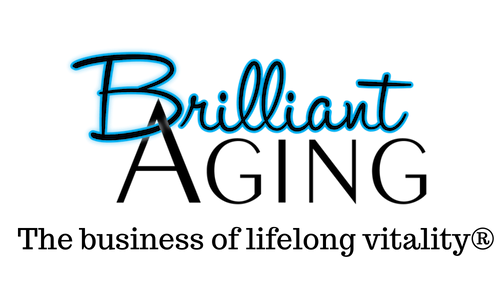Resident Satisfaction Linked to Learning Skills to Thrive “In-Community”
By Kay Van Norman
Recently Kay Van Norman, President of Brilliant Aging presented a webinar with Blake Hadley, President of Senior Care Social titled - Helping Residents Embrace a Wellness Mindset and Thrive in Community.
Blake described how to use social media platforms to showcase a culture of kindness and show what’s possible, rather than focus on amenities.
Kay discussed how to activate both a community-wide culture of well-being and strong resident/family referrals through a process that prepares new residents before move-in to embrace a mindset of well-being and engagement. She summarizes her key topics in this blogpost.
Creating Culture
Senior living communities are amenity and service rich environments, complete with significant advancements in wellness models and programs. Yet, creating a genuine culture of well-being, one that’s immediately palatable when you walk in the door, remains a persistent challenge.
A wellness environment and opportunities provide a framework of possibilities, but activating culture requires preparing new residents before move-in to embrace a mindset of well-being and engagement.
In addition, research shows that regardless of amenities, “feeling at home” is the #1 predictor of resident satisfaction. This includes feeling a sense of contentment and belonging, strong social connections, and a sense of mutual social support.
Whether a move is driven by need or choice, new residents report substantial anxiety about what to expect when moving to senior living: will I fit in, will I feel at home, will I become a valued member of the community? Communities can maximize resident satisfaction and success by creating a deliberate process to help new residents develop confidence in their ability to make a successful social and emotional transition into senior living. This process must help individuals develop the skillset necessary to thrive “in-community”.
Internalizing a Wellness Lifestyle
In my work with senior living over the past 25 years I’ve consistently observed that only a small percentage of new residents move-in with a genuine commitment to the concept of wellness as a lifestyle. These individuals have already internalized the link between wellness and quality of life so engage immediately on move-in. They tell family and friends how happy they are in your community and wish they had made the decision years ago. They can be counted on to energize your resident and family referral network.
By contrast, a large percentage of new residents like the idea of wellness but view it as an amenity – something they may or may not take advantage of. There is a distinct window of opportunity for lifestyle change after a significant life event like a move. However, without being prepared with a skillset before move-in, these residents are at high risk of settling into a pattern of disengagement during the period of time they’re “recovering” from the physical and emotional stress of a big move.
For new residents who move based on need, wellness may seem like something other people – the wellness types - would be interested in. If they view wellness as the absence of health challenges, they may automatically feel like it doesn’t apply to them. This group needs support to develop a wellness mindset.
Optimize Wellness Readiness
What percentage of your new residents are truly prepared in body, mind and spirit to embrace a wellness lifestyle, and how does that impact your community culture, resident referral network, and census? What could it mean to your community to have a higher percentage of new residents across the care continuum move in with an internalized mindset of well-being and engagement?
Most communities have a specific process in place to help new residents make the physical move into senior living. To truly impact culture, they also need a very well-defined process to help new residents make the social and emotional move into a community environment.
This process can significantly increase the percentage of new residents who move in fully primed to embrace a mindset of wellbeing and engagement. It can also help new residents across the care continuum recognize that wellness is a mindset of optimizing well-being - regardless of health challenges.
Prime expectations and deliver resources before move-in
Internalizing a mindset of wellness doesn’t happen overnight so leveraging the entire prospect/resident journey from first contact to move-in is a crucial strategy. Sales counselors spend months or years building relationships with prospects, so empower them with resources that do double duty – educate/excite prospects about the community, and prime a mindset of well-being and engagement. This systematic process will help prospects gradually build the social/emotional skillset necessary to thrive “in-community” long before move-in.
Senior Care Social Focuses on Showing Kindness
Blake’s company, Senior Care Social, also focuses on the social/emotional aspects of the resident experience. He emphasizes that rather than focusing on amenities - which all communities have – social media campaigns should focus on demonstrating how (specifically) your community supports a culture of well-being and mutual social support.
He also describes how communities who use social media to show kindness also develop a “kindness” mindset that changes hearts, changes interactions, and changes how their community is viewed both internally and by the broader community. These elements also help grow census. To learn more about their unique approach, visit www.myseniorsocial.com.
Help More Residents Thrive “In-Community”
Preparing residents to thrive in your community is an opportunity for innovation whose time has come. Kay’s passionate about helping organizations develop a signature process that activates a culture of wellbeing, maximizes resident satisfaction, and energizes resident referrals.
Email her directly at kayvn@kayvannorman.com to schedule a free 30-minute consult to discuss your wellness vision and goals. Visit Brilliant Aging for more details about Kay’s work.

